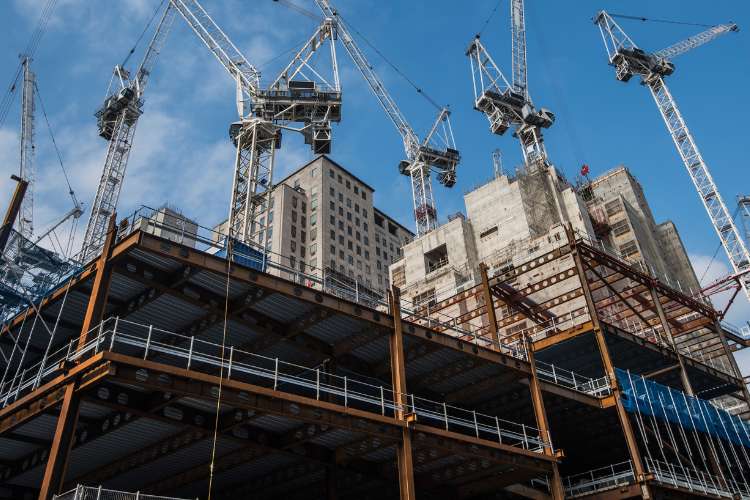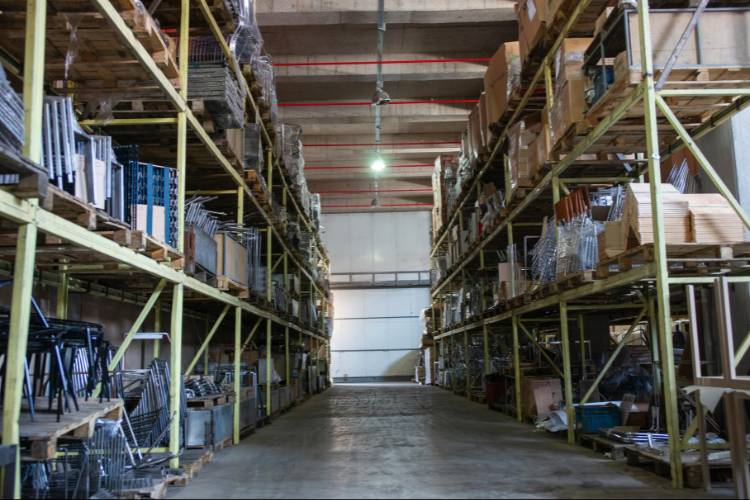There is a saying that “Contractors don’t starve to death, they eat themselves to death.” In other words, sometimes it’s not the absence of work that kills a sub, but piling it on. Still, the promise of “business growth” is everywhere. To a casual observer, it looks like everyone is ravenous for growth. Even at Billd, we talk about business growth a lot, but we want to take a moment to explore some key distinctions on the topic. Growth for the sake of it isn’t a universally good thing for business. In fact, unmanaged growth can have catastrophic consequences, especially in construction. At Billd, we champion the right type of growth, but we decided it was important to define what that means.
In this article, we offer a counterpoint to the “growth at all costs” narrative. We’ll explore the signs you’re growing too quickly and the repercussions of poorly managed growth. To explore this topic, we recruited construction industry veteran Ernie Adams of 1 Priority Environmental Services to lend his perspective.
Table of Contents
What Are the Signs A Construction Company is Growing Too Quickly?
Hit Ratio Too High
A key sign you’re growing too quickly is when the hit ratio on the projects you bid vs. the projects you’re awarded is far too high. If you’re getting 50% of the projects you’re bidding, you’re bidding too low, and won’t be able to accommodate the work you’re being awarded. Not to mention, you’ll burn out your cash too fast.
Don’t bid low to indiscriminately win as many projects as possible. Bid with smart margins in mind (we’ll dive into this more below), then focus on solid delivery of what you’ve been rewarded.
Although not a construction company, we can see a similar principle at play when we look at a failed company like MoviePass. MoviePass, a subscription service that allowed customers to see unlimited movies per month for a monthly fee, set its prices too low. They attracted plenty of customers with that low price of ten bucks a month, but then couldn’t deliver the promised service — in part because they’d won so many customers. Subscribers were turned away at the theater when the company couldn’t pay for their tickets. Ultimately, the company folded in 2019.
Internal Dysfunction
Unsustainable business growth can wreak havoc on the internal mechanics of your company. Biting off more projects than you can chew can lead to a brutally overworked crew and office staff. This increases your chance of losing workers, further straining the load of those who remain. When there are too many projects to manage, the execution can become sloppy, even if your internal processes were once tight and streamlined. Odds are, the systems that sustained your company when you were a team of 20 doing 2M a year won’t sustain you when you’re trying to do 15M a year. You need time to discover the best procedures for your new size. That might mean trialing new software, because your paper-filing system won’t fly anymore. It might mean doubling your office staff, with a careful interview process to find right-fit candidates. Too much growth can create a frenetic environment that hinders steady, patient progress.
Katerra, a construction tech unicorn, is an excellent example of failure at the hands of internal dysfunction — specifically dysfunction stemming from efforts to grow too quickly. The Structural Building Components Association writes:
“Katerra’s strategy was to bring the electronics industry’s end-to-end manufacturing process to the construction business… In its race to boost revenue, Katerra agreed to build properties before it had figured out how to mass-produce building parts and get them to its projects quickly enough to make the model work. Architects designed buildings with parts from Katerra’s factories, only to learn that the parts wouldn’t be ready. Losses on projects piled up… Katerra filed for bankruptcy protection on June 6.”
Cash Flow Strained or Depleted
More often than not, it all circles back to cash flow. In fact, some companies take on too many projects, then run out of capital to support them. It’s important to note that construction companies aren’t venture-funded. Growth has to be coupled with revenue, and this is one the few industries where that’s the case. Even if all that new work could somehow be seamlessly completed, the revenue will take up to 3 months to come in, thanks to overlong payment timelines in construction. When you’re juggling more projects than you’re used to, you’ll quickly strain whatever cash flow you have available.
WeWork, although not a construction company, is a good example of a corporate downfall wrought (at least in part) by insufficient cash flow. Fast Company writes:
The company’s fatal mistake was entering Manhattan and committing to nearly $18 billion of long-term leases without properly measuring execution readiness. The cash flow associated with these leases did not cover the matching debt. This discrepancy resulted in the CEO and founder’s termination.
Worsening Client Relationships
If you load up more projects than you can realistically complete, you’re inevitably going to disappoint people. This hurts customers’ perception of you, and jeopardizes the chance for long term relationships. Not only will your relationships with new clients sour, but you could damage relations with previously satisfied ones as well.
Peloton is an easy example of a company who wrecked their customer relationships with growth-fueled mismanagement. At the height of the lockdown, demand for Peloton bikes was sky high. The brand couldn’t build its exercise bikes quickly enough, which led to thousands of frustrated consumers waiting months for their equipment. In the aftermath, there’s less demand for Peloton’s products. Their revenue fell 28% and they lost more than $2.8 billion in the process.
What Are the Dangers of Too Much Business Growth?
Although there is some overlap between the signs of unchecked growth and the dangers of it, taking on more projects than you can handle usually looks something like this:
- A pile of binding legal documents for which you’re supposed to supply labor and materials, but can’t.
- Waiting for payment on project 1 to pay for materials on project 2.
- Unpaid workers who don’t know when they’ll see paychecks
- Banks seeing that you’re over leveraged.
- Judgments and liens against you.
- A tarnished reputation with clients.
The ramifications of too much business growth too fast are significant, and now that we’ve explored them, it’s time to review Ernie Adams perspective on how to slow down your construction business growth and pick up the pieces.







